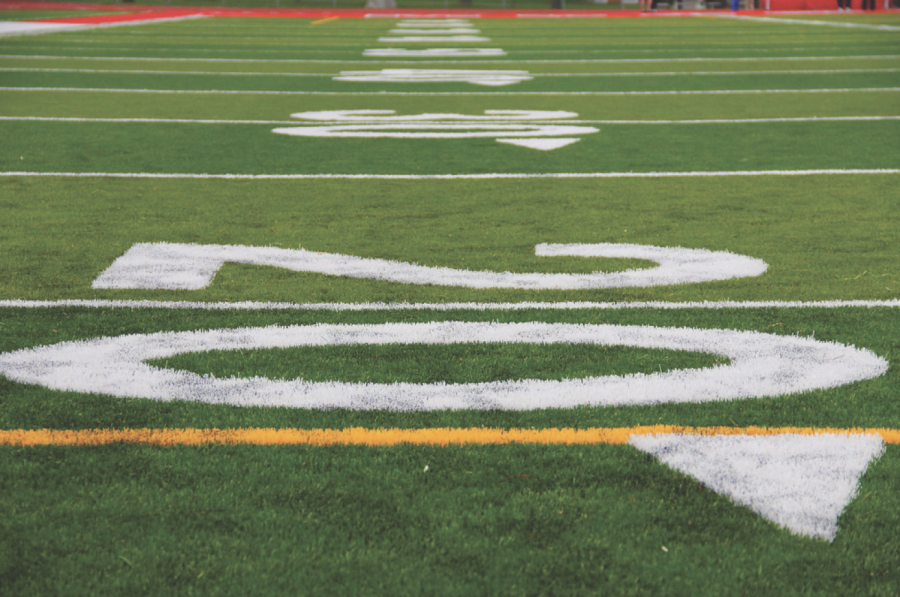The grass versus turf debate
Which playing surface is truly the safer option?
Photo photo courtesy of Flickr
With the reconstruction of Kehler Stadium underway, the WHS community eagerly awaits the highly anticipated improvements. Athletes have waited years for new turf to be laid down on the field.
According to a study conducted by the National Federation of State High School Associations, eight million high schoolers around the nation were members of sports teams in 2018. With so much time spent on the fields, what surface do athletes feel safer playing on: grass or turf?
Football players, soccer players, lacrosse players and many other high school athletes compete on both turf and grass fields throughout their athletic careers. Each athlete has a personal preference as to which surface they feel more comfortable playing on. One of the biggest factors that contributes to each athlete’s preference is safety.
“I would rather play on grass for my own safety because as I run on turf I fear I might tear my ACL,” said junior football player Tim Alliegro.
Alliegro fears the extreme physical risks he and other athletes often associate with playing on turf fields and believes that grass fields are significantly safer. However, according to Dev Mishra, Clinical Assistant Professor of Orthopedic Surgery at Stanford University, there has been very little recently published, high-quality evidence to confirm if one playing surface is better than the other. So, why do many athletes seem to prefer playing on grass over turf?
Artificial turf is made up of three major components: plastic blades, a foundational material that supports the individual blades, and small, black crumbs called infill that support the blades. Infill is made up of mercury, benzene, and arsenic. Some of the chemicals found in the artificial turf, such as benzopyrenes, are known carcinogens, meaning they could potentially cause cancer.
However, in 2017 the Washington State Department of Health conducted a study analyzing the relationship between reports of cancer clusters among female soccer players. A cancer cluster is the appearance of an alarmingly high rate of cancer in one location in a specific time frame. The results of the report found no conclusive evidence that playing on artificial turf directly led to the cancer clusters.
Steve Barandica, head athletic trainer at WHS, believes there is no direct or immediate correlation between turf and cancer as long as the turf is properly maintained. “We would not put any athlete on turf that is not in good condition and is examined and tested for [their] health,” Barandica said.
Other athletes fear that turf can lead to the development of various skin diseases. Methicillin-resistant Staphylococcus aureus is a bacterial skin infection that can impact various parts of the body. What makes this virus especially alarming is that it is very resistant to typical antibiotics. Many athletes believe that artificial turf is a key contributor to the development of MRSA, but this is not necessarily the case.
“I find that skin diseases like MRSA are transmitted due to the cleanliness of the athlete, such as uniforms, equipment, and skin-to-skin contact,” said Barandica. “Turf could cause skin diseases, but I find that it is not the main cause.”
Many athletes, including junior soccer player Faith Dobosiewicz, fear the risk of injuries commonly associated with turf fields. “As a player, I definitely have a preference of playing on a grass field over a turf field,” she said. “I feel safer playing on grass because I have heard so many stories of people tearing their ACLs on turf.”
According to a study conducted by Pennsylvania State University, turf fields can be associated with more severe injuries such as ACL and MCL tears. Grass can cause the same injuries, however, and is more likely to cause common injuries, such as ankle sprains, due to the uneven playing surface of grass fields.
Junior lacrosse player Beckett Dardia explained that, “I would definitely rather play on turf because you know it is flat. With grass, you never truly know what is beneath you.”
Grass fields take significantly more effort to maintain and are often negatively affected by the weather, leading to postponed or cancelled sporting events. Turf is more reliable in this aspect and can be played on during most weather conditions.
There is no denying that participating in athletics comes with some risks.However, there is not enough conclusive evidence available today to determine the safety of turf versus grass fields. The safety of the athletes is the most important aspect of the debate; only time will tell if either is definitively safer as more research and scientific studies are conducted on playing surfaces.

